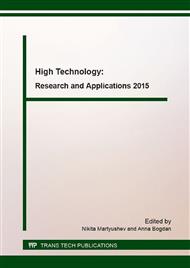[1]
Wiewiorowska, S., Determination of content of retained austenite in steels with TRIP effect deformed at different strain rates, Steel Research International. 81 (2010) 262-265.
Google Scholar
[2]
Wiewiorowska, S., The influence of strain rate and strain intensity on retained austenite content in structure of steel with TRIP Effect. Solid State Phenomena, 165 (2010) 216-222.
DOI: 10.4028/www.scientific.net/ssp.165.216
Google Scholar
[3]
V.E. Panin, Y.V. Grinyaev, V.I. Danilov et al., Structural Levels of Plastic Deformation and of Fracture, Nauka, Novosibirsk, (1990).
Google Scholar
[4]
Hasani, G., Mahmudi, R., Karimi-Taheri, A., 2009, On the strain inhomogeneity in drawn copper wires, International Journal for Materials Forming. 80 (2009) 388-391.
DOI: 10.1007/s12289-009-0417-9
Google Scholar
[5]
Park, H., Lee, D., The evolution of annealing textures in 90 pct drawn copper wire, Metallurgical and Materials Transactions A. 34A(2003) 531-541.
DOI: 10.1007/s11661-003-0089-x
Google Scholar
[6]
Schroeder, J., Balzani, D., Brands, S., Approximation of random microstructures by periodic statistically similar representative volume elements based on lineal-path functions, Archives of Applied Mechanics. 81 (2011) 975-997.
DOI: 10.1007/s00419-010-0462-3
Google Scholar
[7]
Son, S. -B., Roh, H., Kang, S. -H., Relationship between microstructure homogeneity and bonding stability of ultrafine gold wire, Journal of Materials Science. 45 (2010) 236-244.
Google Scholar
[8]
Watanabe, I., Setoyama, D., Nagasako, N., Iwata, N., Nakanishi, K., Multiscale prediction of mechanical behavior of ferrite–pearlite steel with numerical material testing, International Journal for Numerical Methods in Engineering. 89 (2012).
DOI: 10.1002/nme.3264
Google Scholar
[9]
Sadok, L., Luksza, Ł., Majta, J., 1994, Inhomogeneity of mechanical properties in stainless steel rods after drawing, Journal of Materials Processing Technology. 44 (1994) 129-141.
DOI: 10.1016/0924-0136(94)90044-2
Google Scholar
[10]
A. Korchunov, G. Gun, M. Polyakova. Recovery effect in drawing of steel bar for sizing. 11th International conference of technology of plasticity. ICTP 2014, 19 – 24 October 2014, Nagoya Congress Center, Nagoya, Japan. Procedia Engineering. 81 (2014).
DOI: 10.1016/j.proeng.2014.10.059
Google Scholar


